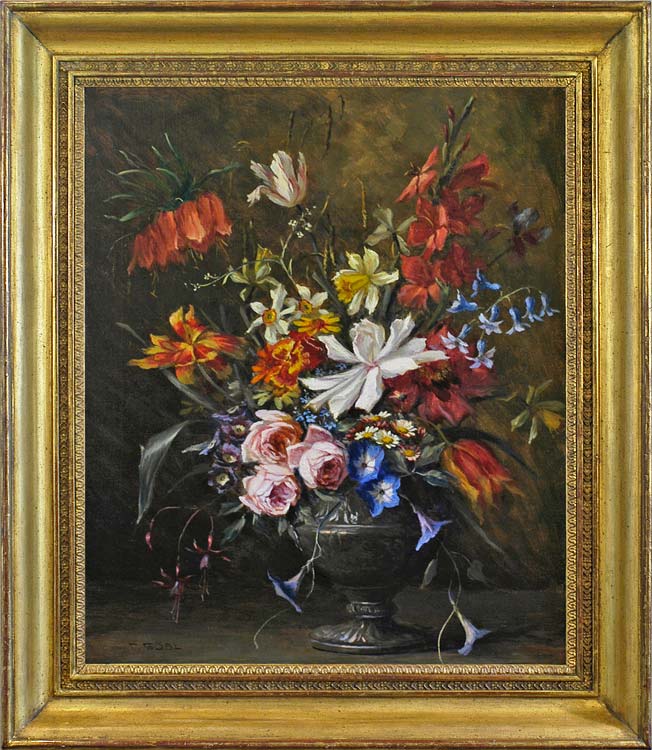Since ancient times, flowers have been a frequent subject of artistic attention. The earliest depictions tend to be a decorative addition to the main subject, but increasingly they took prominence as a subject in their own right.
So what is it about the humble flower that attracts such attention? There are many factors; firstly, they are abundantly available, so it is easy to paint a flower from life. Secondly, they offer a fascinating subject for the artist; simple, yet complex, with a vast range of colourations and arrangements available. They are an excellent subject for practice pieces, for refining artistic skills, and then showcasing those skills once mastered.
Finally, they hold great depths of meaning;
“There’s rosemary, that’s for remembrance. Pray you, love,
remember. And there is pansies, that’s for thoughts.”
– Ophelia, Hamlet – William Shakespeare
Flowers have long been imbued with meanings and messages, and have often been used by artists to convey those meanings. Lilies, pale as ghosts, hold funereal connotations; the cherry blossom speaks of fleeting beauty, and cornflowers held an association with Christ and heaven. In portraiture, particularly from the Renaissance period, paying attention to flowers in the background or held by the sitter can provide greater insight into the piece.
For the art lover and collector, of course, flowers are a popular subject because of their aesthetic values; they are, put simply, a very attractive subject to hang upon the wall. Like landscape paintings, they offer a way to bring nature indoors, to preserve that fleeting moment of beauty.
They can, indeed, provide a more permanent alternative to the fleeting nature of real flowers; a vase of cut stems will last only a few days, but a painting can last for generations. During the “Tulip mania” of the 1630s, artistic depictions of tulips were for many the only affordable way to possess variants which changed hands for many times a craftsman’s annual wage.

Traditional flowerpieces and still life works, such as Vase fleuri de clématites by Marcel Caneel and Guéridon fleuri by Victor Fontaine are the epitome of this oeuvre; an arrangement of flowers composed and displayed much as the real flowers would be, rendered in pleasing detail. However, there are alternate approaches.
One artist who is particularly known for her depiction of flowers is the American artist Georgia O’Keeffe. Instead of taking the traditional route of accurately depicting an arrangement of flowers at something resembling a naturalistic scale, she chose instead to create large-scale paintings, focussed very tightly on the flowers, as if seen through a magnifying glass.
She once said of her work, “nobody really sees a flower, really, it is so small….So I said to myself, I’ll paint what I see, but I’ll paint it big and they will be surprised into taking time to look at it, even busy New Yorkers [will] take time to see what I see of flowers.”
The versatile, complex beauty of the flower in all its forms means that it is certainly a subject with enduring appeal – both for artist and collector alike!



